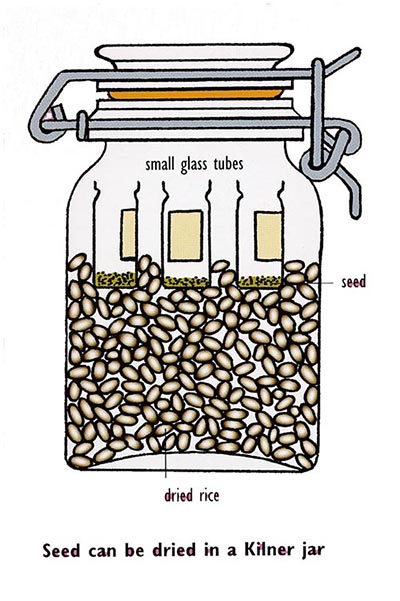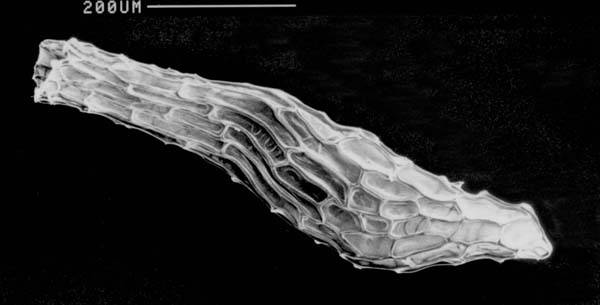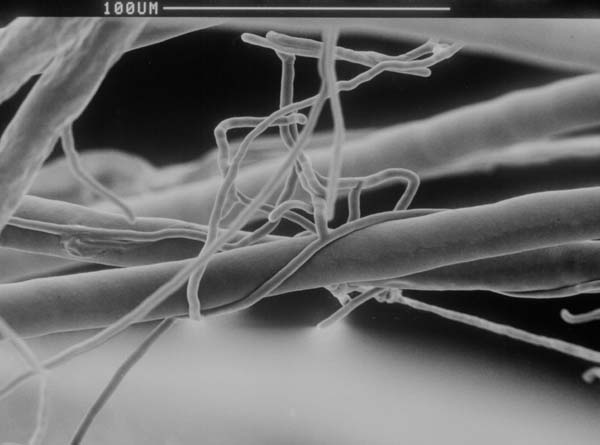
Click here for Seed Bank List - available to members only
Click here for consumable items for supply to members only
Use contact details in JHOS to contact the Seed Bank Manager
Seed Sowing Workshops for Members
These one-day workshops cover all aspects of seed sowing and aftercare of both summer and winter-green orchids. The tutor will be John Haggar, renowned for his skill at hardy orchid seed propagation. Details for 2025 follow but please contact the Seed Bank Manager for further information. Please Note: Only current members can take part
Seed Sowing Workshop 2025
Sunday 17th August 2025
Start 10.00 am. Finish 4.00 pm
Hagbourne Village Hall, Main Road, East Hagbourne, Didcot
Oxfordshire, OX11 9LR
Booking Form & Details
Please Note: Only current members can take part
Hardy Orchid Symbiotic Seed Germination Fungi
Symbiotic fungi are grown in individual Petri dishes, containing Agar, Vitamin B Extract, and Rolled Sieved Oats. These are then inoculated with a small section of fungal mycelium. This quickly spreads across the agar plate. Small sections of the resulting mycelium and agar are then added to the sowing vessel containing the sterilised seed. The fungal mycelium quickly spreads and infects the individual orchid seeds enabling seed germination to take place.
The Hardy Orchid Society maintains three different fungal isolates that are proven to germinate a range of terrestrial orchids. These are available to members of the Society. The following symbiotic fungi are available from the Society.
B1: This fungus is a good ‘All Rounder’ and fairly vigorous. It is good for beginners and on occasions can grow faster than the contaminant, thus offering some protection to the seed. Good germination has been documented in the following :-
Anacamptis morio; A. laxiflora; A. palustris; A. fragrans; A. sancta; (but not A. pyramidalis or A. papilionacea); Dactylorhiza elata; D. fuchsii; D. iberica; D. insularis; D. maculata; D. majalis;
D. nieschalkiorum; D. purpurella; D. romana; D. saccifera; D. sambucina; D. spagnicola; Goodyera oblongifolia; Gymnadenia conopsea; Habanaria tridactylites; H. repens; Orchis boryi; O. elegans; Platanthera bifolia; Ponierorchis graminifolia; Pterostylis ingens, P. nutans; Serapias lingua; Spiranthes sp.
A36: This fungus is a good ‘All Rounder’ and grows rapidly. Good germination has been documented in the following :-
Gymnadenia sp.; Anacamptis papilionacea; Anacamptis elegans; Dactylorhiza sp.; Spiranthes sp.
Q414: This fungus is less vigorous than the previous two, growing much more slowly. Good germination has been documented in the following :-
Serapias sp.; Dactylorhiza sp.; Spiranthes sp.; Anacamptis sp (not A. pyramidalis)
Members may have experience of germinating other species using these three fungi. If so, then please let the Seed Bank Manager know so that this information can be periodically updated.
Donating Orchid Seed
The seed bank manager is always pleased to receive donations of good quality dry seed. Such seed must, however, have been obtained with the appropriate permission. We would expect the majority of donations to be derived from plants grown within members’ collections (N.B. Illegally acquired plants cannot produce legal seed!). If seed is collected from the wild, this must be done with the written permission of the landowner. Seed from Schedule 8 species cannot be collected within the UK without permission from Natural England or the Scottish and Welsh equivalents.
Harvesting
Ideally seed should be harvested on a dry day at, or just prior to, splitting of the seed capsule. Seed capsules can be placed in paper (not plastic) bags. If you harvest immature capsules for seed sowing yourself, please remember that it is not possible to store seed of immature capsules within the seed bank.
Cleaning
The seed bank manager would prefer to receive cleaned seed samples rather than seed plus capsules. Seed can easily be separated from the seed capsule debris using a tea strainer. Seed can then be placed in a paper (not polythene) envelope. Seed can then be posted to the seed bank manager (see below for instructions), however, we would like to encourage donors to dry the seed first if possible.
Drying
Drying is a key component of successful long-term orchid seed storage. Seed with a high moisture content can lose its viability very rapidly indeed. Consequently, the sooner the seed is dried the better, and ideally it should be dried immediately it has been harvested. This is easily achieved using dried rice, in an air-tight jar (Kilner jars are ideal) as in the illustration.
Any supermarket brand of rice will do. To dry the rice, simply spread a thin layer in the bottom of a baking tray, and dry in the oven at around 110 C for a couple of hours.
It is important to remember that the rice requires regular regeneration as, with repeated use, it will itself gradually become increasingly moist. The drying capacities (i.e. how much moisture it is capable of absorbing) of rice is also generally unknown, so you should use plenty of it, filling the jar at least three quarters full of dried rice.
Seed should be left in the (desiccator) drying jar at room temperature for 2 or 3 days. Once dried, the seed can be placed in a sealed (preferably glass - seed tends to stick to plastic) container for postage.

Sending Seed Through the Post
Franking machines are death to orchid seeds, they simply mash them to pieces. Seed should be sent within some sort of crush-proof container (CD boxes are good), or something reasonably sturdy inside a padded envelope is good.
Identification of the Donated Seed
There is no way that the seed bank manager can know if the donated seed has been correctly identified. Ideally donors should submit a good quality photograph of a flower, and perhaps one of the whole plant in flower too. Photographs can be sent separately as an e-mail attachments, and colour prints or transparencies can also be scanned.
Cultivation - Propagation from Seed
The following information and pictures related to propagation are as provided on the original HOS website




Orchid seeds are small - very small! The seed does not have enough stored energy to germinate and grow by itself. In the wild, the seed gains nutrients as a result of being infected by a beneficial fungus which gives up carbohydrate (and possibly other nutrients) and so allows the orchid to grow.
Seed sown into soil around or from the parent plant may stumble across the right fungus. Many people who grow Dactylorhizas in their garden come across seedling plants from time to time in their pots and borders, but it is a bit hit and miss. Better then to do it under controlled conditions in the laboratory?
In order to encourage more people to propagate hardy orchids, the HOS 'Seed and Fungus Banker' maintains both a Seed Bank and a Fungus Bank for the benefit of HOS members. The Seed Bank is stocked with surplus seed collected from member's plants, and usually contains an impressive range of varieties. The Fungus Bank includes several of the symbiotic fungi, grown in sterile conditions, that have proved successful in the germination and cultivation of many groups of hardy orchids.
Seed Sowing at Home
Many members of HOS sow orchid seed in home laboratories (otherwise known as kitchens or spare rooms) with some success! Various back issues of the HOS Newsletter give excellent detailed advice on how to get started. The following items need to be considered.
Sterile working area: A HEPA filtered laminar flow cabinet is ideal - but hardly likely to be accessible to beginners. Try rigging up a 'glove box' or a modified fish tank on its side. See see HOS Newsletter issue 3.
Autoclave: A pressure cooker to sterilise everything.
Germination/Growing medium: There are two distinct types:
1. Medium based on agar gel and porridge oats with suitable fungi (symbiotic growth).
2. Medium based on agar gel containing nutrients to be used without fungi.
Various recipes are available in books or in HOS Newsletters 2 and 7 (require an accurate means of measuring small weights). Some recipes may be purchased ready-mixed or as solutions.
Sundries: Jars, Petri dishes, chemicals, agar, tools etc - they are all mentioned in the HOS Newsletters.
Fungus and Seed: Many types are available from the HOS Fungus and Seed Bank. Please refer to the Conservation section before thinking of collecting seed which is not obtained from your own land.
Methods
Detailed methods and tips are discussed in HOS Newsletters Nos. 2, 3, 4, 5 and 9.
The following basic steps involved are:
-
Soak the seed in sugar solution for 4 days.
-
Wash the seed three times in sterile water.
-
Sterilise the seed in (thin) bleach (add 9 parts water to each part of bleach) for 10 - 30 minutes.
-
Wash the seed three times in sterile water and sow onto the germination medium.
-
Add fungus (if you are using it), seal the jar/Petri dish, and leave to germinate at room temperature, in the dark.
-
When germination has occurred and the protocorms are large enough to handle with forceps/tweezers, they can be replated (i.e. transplanted) onto fresh, sterile medium to allow them enough space to grow.
Cultivation
The Hardy Orchid Society has brought together a range of experts on many aspects of the propagation and cultivation of hardy (and almost hardy) orchids. One of the main objectives of the Hardy Orchid Society, through its meetings and publications, is to spread the knowledge and wisdom of these experts throughout the society. In this way, the pressures on wild populations can be reduced, and more people can come to enjoy the pleasures of growing these marvellous plants. A glance at the HOS Journal/Newsletter indices will convince you of the vast range of information that is now available - and it increases with every new issue!
Nothing can beat the beauty and enchantment of experiencing terrestrial orchids in the wild - so by all means get out there (on holiday or otherwise) and be enchanted. Many of us, however, also like to capture some of that magic and grow them in the open garden or in containers. You are strongly recommended to see the orchid classes in the Alpine garden Society Shows, or come to the HOS AGM in April or May where there is a show of members' plants.
Natural orchid habitats vary and, not surprisingly, so do cultivation requirements. Attempting to mimic the climate and environment from which each species comes is a good start.
Orchids for the Garden
Several orchid varieties suitable for rockeries and borders in British gardens are found among the Dactylorhiza (Marsh Orchids), Epipactis (Helleborines) and Orchis genera. All that these need is a soil that is not too heavy and that does not dry out in the summer. Even better is to grow them in a raised bed or in a large pot or patio tub. There you can give them more attention (use an open compost, do not allow them to dry out, feed them with weak fertiliser, shade them on hot summer days, etc) and move them to show off their majestic spikes of flowers in June /July.
CLICK HERE to view a useful article by Malcolm Brownsword from our journal
Cold Frame/Cold Greenhouse
With a little protection, the number of different types of orchid suitable for cultivation really does proliferate. For the 'wintergreen' types of orchid - especially those from the Mediterranean area - it is worth equipping yourself with a greenhouse or conservatory with electricity. This allows a simple thermostatically controlled fan heater to keep the compost just above freezing. With careful watering, most of the Mediterranean types of orchid are amenable to cultivation in Britain.
Further Information
The best approach is to join the society, speak to other like-minded people and come to the meetings. Also, the HOS Journal/Newsletter carries many articles on cultivation.